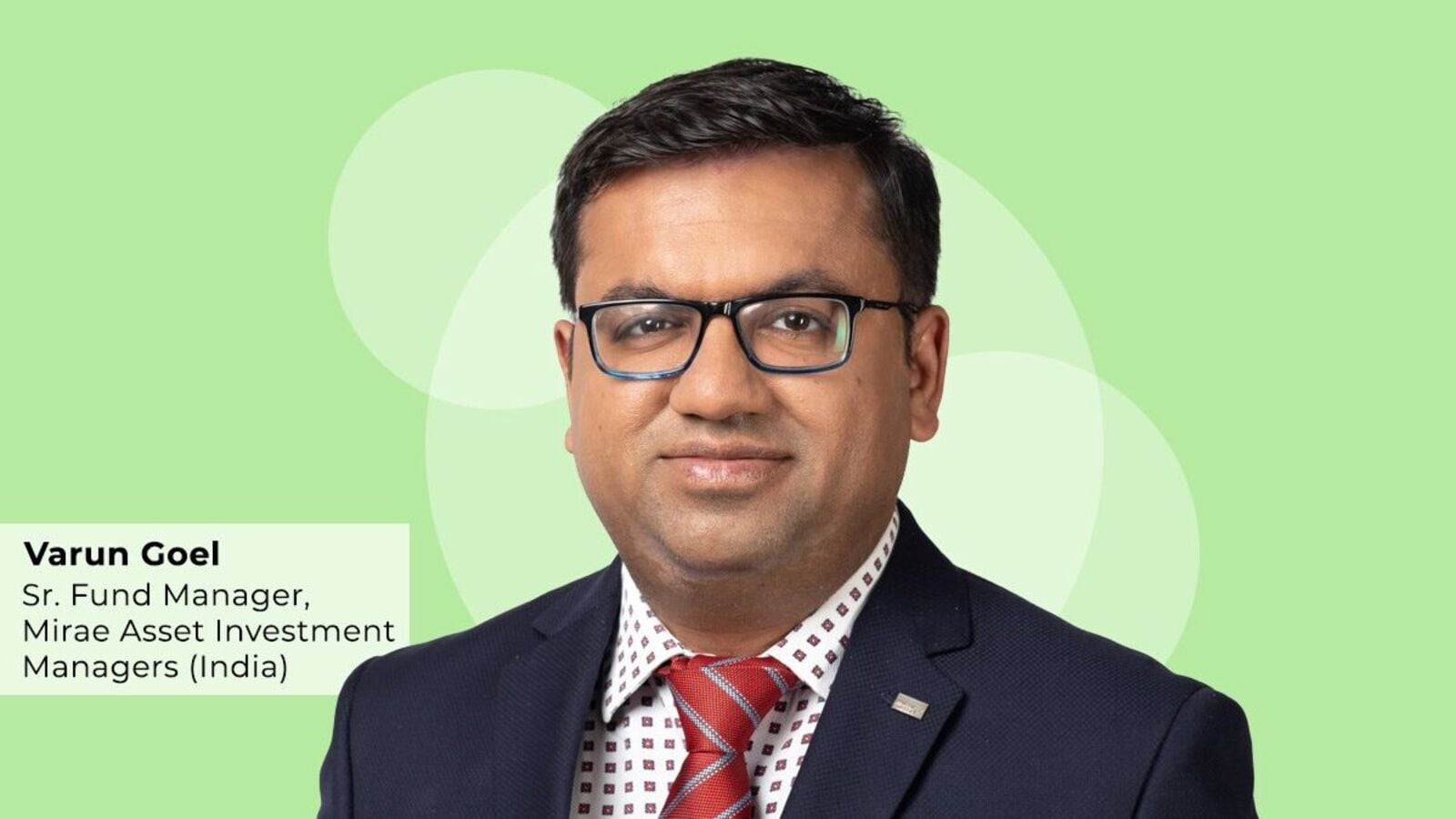Smallcap valuations mixed, earnings visibility key; bullish on lending, healthcare, says Mirae Asset’s Varun Goel

Valuations in the small-cap segment are not uniform, with some stocks appearing expensive while others continue to offer attractive entry points, says Varun Goel, Senior Fund Manager at Mirae Asset Investment Managers (India). In an interview with Livemint, Goel shares his outlook on the Indian stock market against the backdrop of global geopolitical uncertainty and explains why he remains optimistic about a growth rebound in FY26.
He also offers insights into the sustained investor interest in small-cap funds, sectoral preferences, and why Mirae prefers staying fully invested rather than sitting on cash during volatile times. Edited excerpts:
How do you read the overall markets in the backdrop of an uncertain geopolitical situation?
FY26 should be the year for growth rebound for India. We expect that significant monetary easing, tax cuts and good agricultural production and strong recovery in central government capex spending should lead to recovery in GDP growth and corporate earnings. Geopolitical tensions — whether stemming from trade disruptions, regional conflicts, or energy market instability — are undoubtedly contributing to near-term volatility.
However, when we move past the headlines, the Indian growth story continues to look promising. Credit growth and corporate earnings should recover, and infrastructure-led capex is gathering momentum. In our view, this is a time to stay engaged and build portfolios with structural resilience.
Do you believe smallcap funds can emerge as clear winners in this volatile market environment?
Small-caps are inherently more volatile, and sharp corrections are part of the cycle. Historical trends show that when macro and sentiment-related headwinds ease, this segment tends to rebound strongly. We are focusing on smallcap businesses that have robust earnings visibility, prudent balance sheets, and scalable business models. Over a 3–5 year horizon, these can emerge as meaningful compounders.
Smallcap funds have seen nearly ₹21,000 crore in inflows, yet the segment hasn’t performed well in 2025. How do you rationalise this investor behaviour?
These inflows in smallcap mutual funds suggest a maturing investor base that is more aligned with long-term investing. A large part of these flows is driven by systematic investment plans (SIPs), where investors continue to participate despite short-term volatility. This is a healthy development. Rather than reacting to market noise, investors are treating corrections as opportunities. Often, such disciplined participation can lay the foundation for stronger long-term outcomes — especially in the smallcap space, where recoveries can be sharp.
How do you view smallcap valuations? Is the premium currently seen justified?
Valuations in the smallcap segment are not uniform. While some areas are definitely trading at stretched levels, others still offer attractive entry points. One should avoid getting carried away and chasing overheated stories. We take a bottom-up view — valuation is justified only when it’s backed by strong fundamentals such as earnings growth, capital efficiency, and a clear path to scalability. Selectivity is crucial in this phase.
What sectors are you bullish on and why? Also, which three sectors are you currently avoiding?
We remain constructive on the lending space. The significant monetary easing carried out this year should lead to healthy growth for small banks, SFBs and NBFCs. The healthcare segment is geared towards healthy medium term compounding with hospitals and diagnostics space seeing a strong shift from unorganized to organized.
Also, we see secular growth opportunities in CRAMS (contract research and manufacturing) space. The portfolio is more geared towards capturing domestic economic recovery stories in BFSI, Auto, Capital goods and manufacturing and cautious on export segments.
Given the current uncertainty, does it make sense to sit on cash?
At Mirae Asset, we don’t believe in holding large amounts of cash as a strategic stance. We prefer to remain fully invested in high-conviction ideas. Sitting on the side lines risks missing out on quality opportunities that often emerge during periods of dislocation.
Does the size of a fund impact its performance? Are smaller funds more efficient in the smallcap space?
In the smallcap universe, fund size can influence operational flexibility. Smaller funds are typically more agile in building meaningful positions in emerging companies where liquidity is tight. That said, efficiency is not purely about size — it’s about the robustness of the investment process. What matters is the quality of research, portfolio construction, and risk management. Ultimately, it is the consistency and discipline in execution that drive outcomes — not just fund size.
Read all Stock Market news here
Disclaimer: The views and recommendations made above are those of individual analysts or broking companies, and not of Mint. We advise investors to check with certified experts before making any investment decisions.






